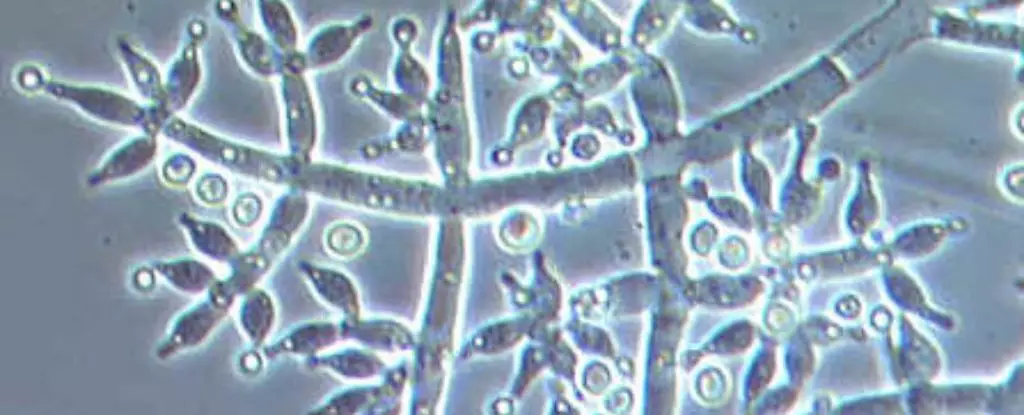In the intricate web of ecosystems, every organism plays a critical role, often in ways we least expect. One surprising player in this biological theater is fungi, which, despite their lack of ears, appear to be acutely responsive to the sounds around them. Recent groundbreaking research reveals that the fungus Trichoderma harzianum can accelerate its growth and spore production when exposed to specific sound frequencies, particularly high-frequency white noise reminiscent of radio static. This intriguing phenomenon not only challenges our understanding of fungi but also opens new avenues for agricultural and ecological innovation.
The research conducted at Flinders University in Australia involved exposing petri dishes of Trichoderma harzianum to 30 minutes of white noise every day for five consecutive days. Researchers observed that the fungi in sound-treated environments exhibited significantly faster growth compared to those kept in silence. This heightened growth rate is particularly noteworthy because T. harzianum is commonly found in soils, thriving on plant roots and serving as a natural pest controller by parasitizing harmful fungi that adversely affect crops. These findings suggest a potentially revolutionary approach for enhancing soil health and boosting agricultural productivity through auditory stimulation.
As microbial ecologist Jake Robinson, who led the study, emphasizes, the goal is to innovate ways to enhance beneficial microorganisms that play a pivotal role in restoring and sustaining agricultural landscapes. The ability to manipulate fungal growth through sound could have wide-ranging implications for farming practices, particularly in ensuring global food security amid challenges related to soil degradation.
Understanding why T. harzianum responds positively to white noise remains an ongoing challenge for researchers. Robinson and his team speculate that the sound waves may be mechanically activating the organism’s receptors, leading to either electrical or biochemical signals that alter the fungi’s genetic expression or reproductive behavior. If these signals influence cellular production, it could revolutionize how we approach fungal cultivation and agricultural practices.
Despite the promising results, there remains a need for further exploration. For instance, will the beneficial effects observed in controlled laboratory settings translate to natural environments? Additionally, does the enhanced growth of T. harzianum translate into better outcomes for plant health or even beneficial bacterial growth? These questions highlight the complexity of ecosystems where various microorganisms interact in multifaceted ways.
Notably, the impact of sound on fungi is not universally positive. In a shift from beneficial to detrimental effects, another research published in 2020 demonstrated that the hum of refrigerators could accelerate the growth of pathogenic fungi responsible for decaying fruits and vegetables. This duality underscores the importance of further investigation into sound’s influence, ensuring that beneficial practices do not inadvertently promote adverse outcomes.
The delicate balance between exploiting sound for beneficial effects while mitigating the potential risks emphasizes the need for a nuanced approach in future studies. For instance, while oyster mushroom farmers have reported enhanced fruiting body growth from specific sound treatments, researchers must cautiously consider the full spectrum of auditory influences in agricultural practices.
The recent findings regarding the auditory responsiveness of fungi, particularly Trichoderma harzianum, represent a significant stride in understanding and leveraging the natural world’s complexities. By exploring the interplay between sound and soil microbial communities, researchers are poised to develop innovative strategies for enhancing ecosystem resilience and productivity.
As humanity seeks sustainable solutions to pressing environmental challenges, it becomes increasingly evident that tapping into the natural processes of growth and interaction continues to be a fruitful area for exploration. Just as sound permeates our lives, it may very well weave itself into the future of ecology and agriculture, guiding us toward enhanced soil health and productivity in our ever-evolving relationship with nature. The potential to harmonize scientific understanding with practical applications could revolutionize our approach to nurturing the earth.


Leave a Reply